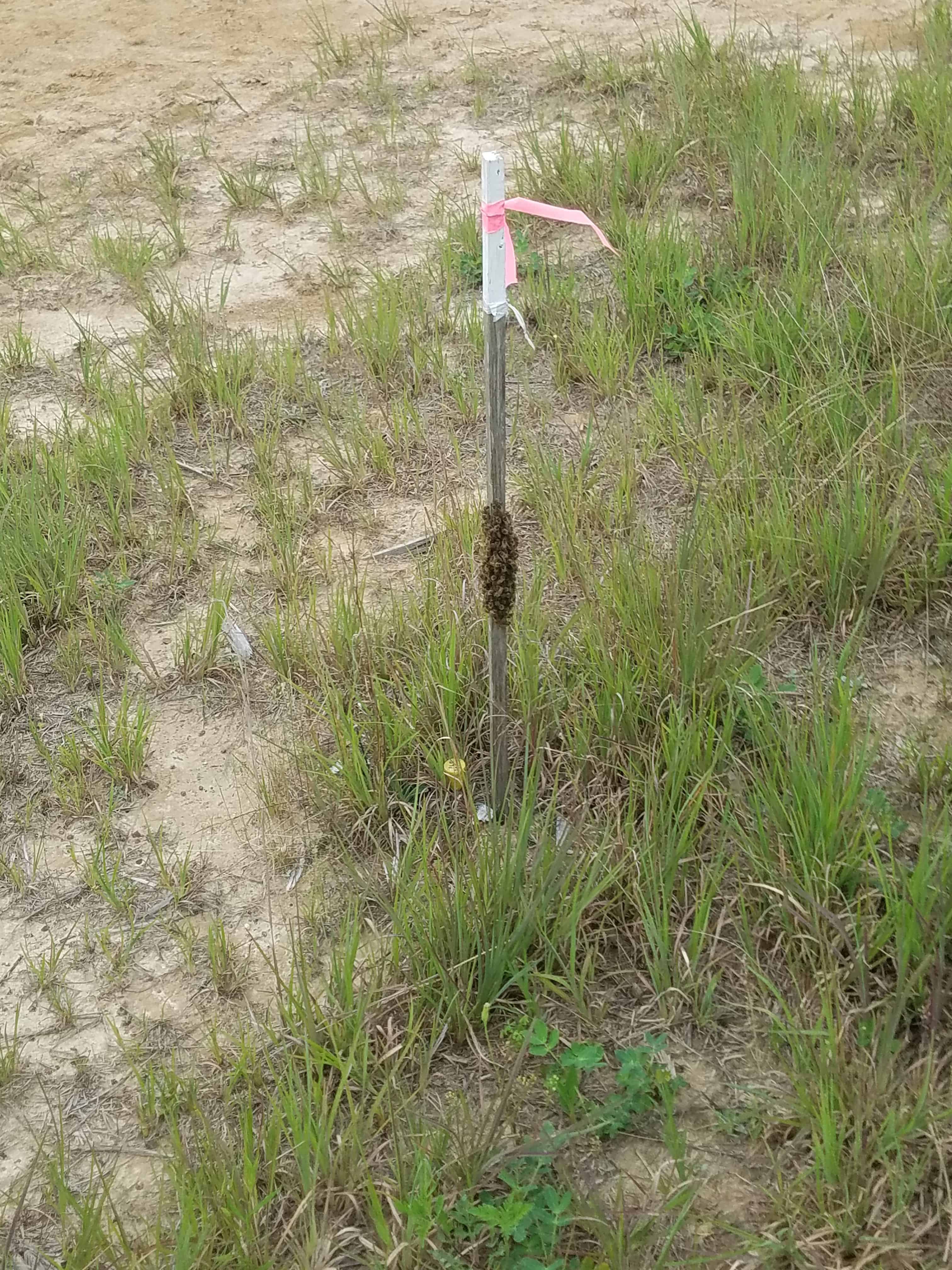We all tell tales about big swarms, the kind that barely fit into your catch box. Well, this morning I was called out to the smallest swarm I have ever seen, and I’ve attached a photo. Catching the swarm was simple enough; I simply pulled up the stake and shook it over my catch box. As to what to do with the swarm, I’m not sure yet. In “Honey bee Biology and Beekeeping”, Dewey Caron gives the smallest size swarm that can successfully develop into a colony as ~200 bees; I’m not sure this swarm makes that cut.
In other happenings, last week Mary and I drove up to Asheville, NC to see what the town is about (we’re auditioning permanent retirement locations). Unfortunately, it rained most of the time we were there, so I googled “beekeeping supplies Asheville NC” and got Wild Mountain Bees just outside of Asheville. We decided to check out the shop and learn about the Asheville beekeeping scene. While most local beekeeping supply stores are little more than small warehouses, Wild Mountain Bee looks like a real store with displays such as you would find in a normal store (only these displays are beekeeping supplies). They even have a sitting area with stacks of bee magazines where you can relax and tell tales where the only guaranteed true part is that bees are involved.
Fortunately, the shop was not crowded, so I had a long talk with the proprietor. Asheville beekeeping is very similar to Montgomery County beekeeping. They have an active local beekeeping association. Their big crop is tulip poplar, but you can get sourwood. The nectar flow season is May and June, with a summer dearth. Unlike Dothan, Asheville does have a winter with the bees clustering for extended periods of time. The recommendation for Asheville is to enter winter with 60 pounds of honey on a colony - about double the amount of honey we give a colony for the winter in Dothan. On the minus side, Asheville beekeepers do have to deal with bears, but a plus is that small hive beetles are not a big problem for them. In Dothan, small hive beetles are a major headache.
Back home in Dothan, I ran my late May Varroa mite surveys, and the results were all over the place. Sone colonies had < 1% of the bees with mites, and others had mite loads approaching the 3% “treat now” threshold. Accordingly, I started my honey harvest early in preparation for installing my summer mite treatments. I’ll be bringing some to the next meeting of the Wiregrass Beekeepers.
My original plan had been to use some Apivar® strips that I had in cold storage that were in unopened packages. Per the label, unopened Apivar® strips have a shelf life of 24 months, and these strips turned out to have been manufactured in March of 2013. At $2/strip, I might have been tempted to cheat and use strips that were overage by a month or two, but strips that are twice as old as their shelf life aren’t worth the risk. Moral: If you have unused treatments, check their expiration date. The expired strips have been tossed, and I’ll be getting newer strips to use.
One more thing about Apivar® strips: According to the manufacturer, once the package is opened the strips in the package should be installed as soon as possible. That doesn’t mean you can’t keep an opened package for a few days before installing the rest of the strips, but I would not push it much.
And that’s the June news from the South. I trust you all are having a good nectar flow.
-Bill Miller

